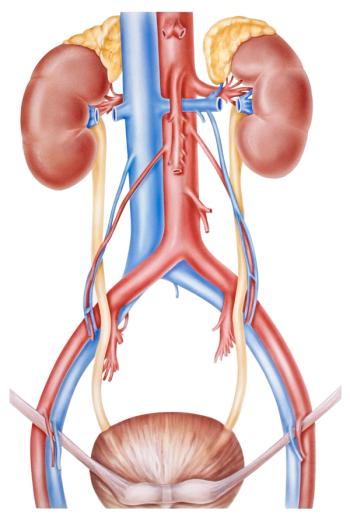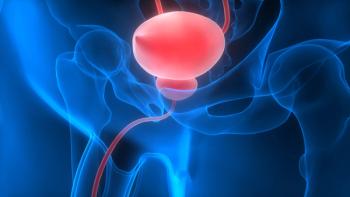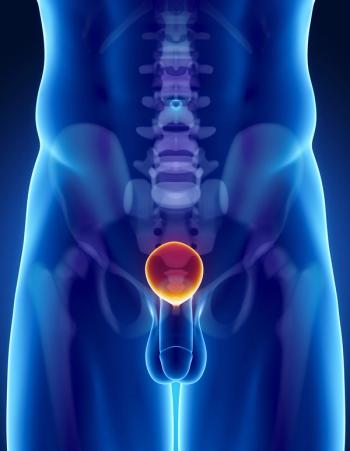
Oncology NEWS International
- Oncology NEWS International Vol 7 No 10
- Volume 7
- Issue 10
Algorithm Uses Percent-Free PSA to Predict Prostate Cancer
STRATFORD, Connecticut--Several studies have shown the ability of the percent-free PSA blood test to help differentiate benign prostatic hyperplasia (BPH) from prostate cancer among men with elevated PSA levels and thus reduce the need for prostate biopsy. Now, two studies in the September issue of Urology have further defined the situations in which percent-free PSA may be used to improve the performance of total PSA level results.
STRATFORD, Connecticut--Several studies have shown the ability of the percent-free PSA blood test to help differentiate benign prostatic hyperplasia (BPH) from prostate cancer among men with elevated PSA levels and thus reduce the need for prostate biopsy. Now, two studies in the September issue of Urology have further defined the situations in which percent-free PSA may be used to improve the performance of total PSA level results.
Alan W. Partin, MD, PhD, of Johns Hopkins School of Medicine, and his colleagues at Dianon Systems Inc., analyzed percent-free PSA levels in a database, provided by Dianon, of nearly 4,000 men with moderately elevated PSA levels (4.0 to 20 ng/mL) diagnosed as either cancer or BPH. (Dianon has developed an investigational double-antibody radio-immunometric assay for measuring percent-free PSA.)
They found that patient age and total PSA levels were the most effective independent variables when interpreting percent-free PSA.
The researchers then developed a statistical algorithm combining age, total PSA, and percent-free PSA to calculate the probability of prostate cancer. They tested the model in an additional dataset of 525 patients to determine its clinical utility at selected probability cutoffs.
The validation study showed that an 18% probability cutoff detected 95% of malignant biopsies and 34% of negative biopsies. "A 25% free PSA cutoff would have detected 95% of malignant cases and eliminated 23% of benign cases; that is, 23% of the benign cases had higher than 25% free PSA," Dr. Partin said. Further, the algorithm proved more effective than percent-free PSA alone in differentiating BPH from prostate cancer. It yielded an 11% percentage point increase in specificity over percent-free PSA alone (34% vs 23%), he said.
"These predicted probabilities can be used in the context of the patients risk tolerance and preference for decision making regarding the need for prostate biopsy," he concluded.
The second study was designed to determine an appropriate lower limit for total PSA value at which percent-free PSA distributions would differ between benign and malignant cases and for which percent-free PSA could be used to predict prostate cancer.
Lower Limit of Total PSA
The researchers examined the performance of percent-free PSA in 479 men with low PSA values (4.0 ng/mL or less) who had undergone diagnostic prostate biopsy. The study is the largest of its kind of men with total PSA levels of 4.0 ng/mL or less.
Stacy J. Childs, MD, of the University of Colorado Health Sciences Center, found that percent-free PSA was not an indicator of prostate cancer until total PSA reached 4.0 ng/mL. When total PSA was at least 3.9 ng/mL, the percent-free PSA distributions for benign and malignant cases were significantly different. However, at the 3.9 ng/mL level, percent-free PSA testing could not predict prostate cancer.
Based on their evaluation, the investigators concluded that percent-free PSA measurements should be applied only to men with total PSA values of 4.0 ng/mL or higher.
"Further studies are necessary to confirm these findings and evaluate whether differences in assay methodology affect results," they said.
Coauthors for both Dr. Partin and Dr. Childs were Grant D. Carlson and Christina B. Calvanese of Dianon Systems (Urology 52:450-454; 455-461, 1998).
Articles in this issue
about 27 years ago
Panel Recommends Photofrin for Use in Late-Stage Lung Cancerabout 27 years ago
California Intervention Raises Consumption of Fruits and Vegetablesabout 27 years ago
ODAC Panel Okays Nolvadex to Reduce Breast Cancer Riskabout 27 years ago
Evolving Role for Preoperative Chemo in Breast Cancerabout 27 years ago
NCI Sets Sail on a New Tack In the Stormy Seas of CAMabout 27 years ago
Opioid Antagonists Can Control Opioid-Induced Constipationabout 27 years ago
NCI Seeks New Technologiesabout 27 years ago
NIAID Collaborates With VaxGen, Inc. on Trials of AIDSVAXabout 27 years ago
Clinicians Often Fail To Provide Adequate Genetic CounselingNewsletter
Stay up to date on recent advances in the multidisciplinary approach to cancer.



















































































